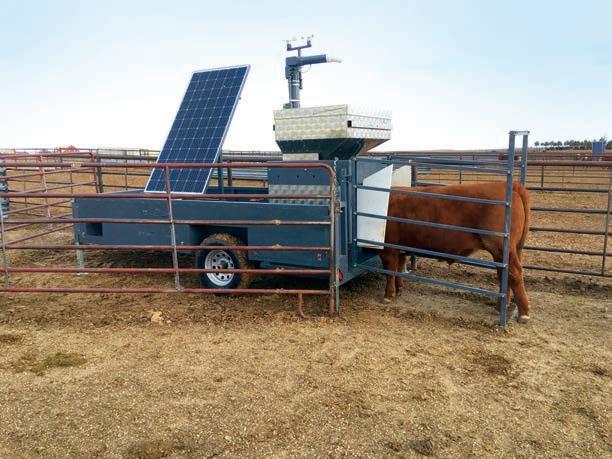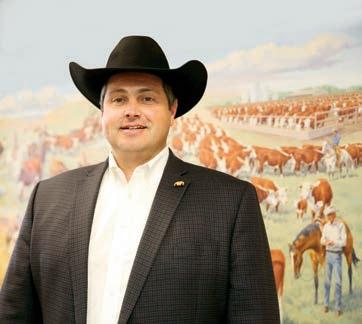
2 minute read
Performance Matters

by Shane Bedwell
Sustainability Leadership
Learning more about the breed’s carbon footprint benefits the whole industry.
Shane Bedwell is the chief operating officer and director of breed improvement of the American Hereford Association. He can be reached at sbedwell@hereford.org. Every year, I look forward to the American Hereford Association (AHA) Annual Membership Meeting and Conference. It’s a chance to reconnect with breeders I already know and meet new ones. Without question, this year’s educational forums were a highlight of the event — jam-packed with phenomenal content and a standingroom-only crowd most of the day.
One forum highlighted the pioneering collaborative research project AHA is conducting with AgNext and the beef cattle genetics team at Colorado State University. Briefly, AHA is funding a graduate student to conduct research about beef cattle sustainability, relative to greenhouse gas (GHG) emissions and nitrogen excretion. Goals of the research include documenting genetic differences for traits related to GHG emissions and nitrogen excretion and developing a selection tool that can be used to make improvement.
Early literature suggests that Dry Matter Intake (DMI) and methane production have a moderately high correlation of 0.65, while the heritability of methane production is moderate at 0.19 to 0.27. These levels suggest progress could be made if there were a trait to measure. Bottom line, the goal is to develop a baseline for GHG emissions and nitrogen excretion in cattle.
Data amassed through AHA’s Whole Herd Total Performance Records (TPR™) and the National Reference Sire Program make this research possible.
Social license is imperative
Some may think the societal discussion about global warming is a political fight and wonder why AHA is investing resources in this research. As Kim Stackhouse-Lawson, Ph.D., shared during the forum, “If this issue was based on science, then it would have been squashed a long time ago. Instead, it is driven by emotion.” Like it or not, the beef industry is coming under fire, and our social license to operate is being attacked. The AHA Board supports this research and is excited about Hereford being an industry leader in this area.
Hereford has demonstrated its obvious advantages in fertility, longevity and hybrid vigor, as well as a significant feed efficiency advantage. Adding DMI and Sustained Cow Fertility to the genetic evaluation in 2017 enhanced breeder opportunity to make further progress.
Consider data from the U.S. Meat Animal Research Center documenting that Hereford consumed 1.7 pounds less feed per day when compared to Angus. This advantage equated to 191 pounds less corn per Hereford steer during the feeding period. Multiply this advantage by the number of cattle marketed as Certified Hereford Beef® in fiscal year 21. It equates to saving 31.6 million pounds of corn — enough corn to feed a 100,000-head feedlot for 19 days. To say that DMI is a key, economicallyrelevant trait is an understatement.
Hereford advantages provide commercial cow-calf producers with revenue-enhancing solutions that lead to improved economic sustainability. Now, the breed is poised to demonstrate its advantages for sustainability, relative to GHG emissions.
Merry Christmas.







